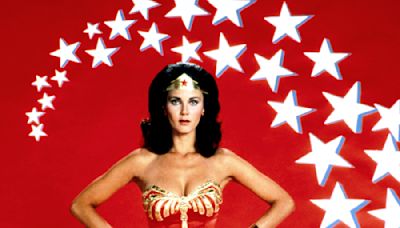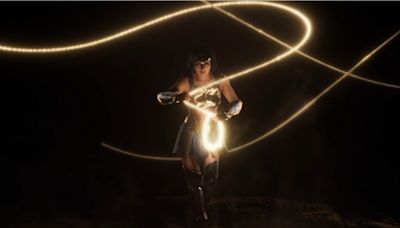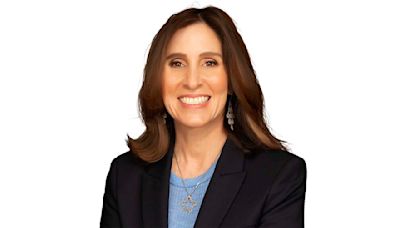Search results
Wonder Woman is a superheroine created by the American psychologist and writer William Moulton Marston (pen name: Charles Moulton), [2] and artist Harry G. Peter in 1941 for DC Comics. Marston's wife, Elizabeth, and their life partner, Olive Byrne, [3] are credited as being his inspiration for the character's appearance.
- Wonder Woman (Disambiguation)
Wonder Woman, a television pilot starring Cathy Lee Crosby;...
- Indestructible Bracelets
In the Wonder Woman comics, the Bracelets of Submission are...
- Introducing Wonder Woman
"Introducing Wonder Woman" is a story from All Star Comics...
- Wonder Woman in Other Media
Wonder Woman guest starred in the Superman episode,...
- Wnyx
WNYX may refer to: . WNYX-LD, a defunct low-power television...
- Fury
Fictional character biography Hippolyta "Lyta" Trevor...
- Wonder Woman (Disambiguation)
- Overview
- Origin in the Golden Age
- The Silver Age and television success
Wonder Woman is an American comic book heroine created for DC Comics by psychologist William Moulton Marston (under the pseudonym Charles Moulton) and artist Harry G. Peter.
How did Wonder Woman get her powers?
Wonder Woman is an Amazon, a race of female warriors in Greek mythology. For the purpose of the Wonder Woman character, it was the Greek gods who gave her her powers. These powers include superhuman strength and speed as well as the ability to fly.
What does Wonder Woman do?
Wonder Woman is a powerful leader and warrior. Her strength, speed, near invulnerability to physical harm, and equipment (particularly her golden lasso) make her a strong character. She is part of the DC “trinity,” along with Batman and Superman, and is a founder of the Justice League, humanity’s defense against powerful threats.
What is the movie Wonder Woman 1984 about?
The details of Wonder Woman’s origin have changed many times over the years, but the basic premise has remained largely the same. U.S. Air Force pilot Steve Trevor’s plane crashes on the uncharted Paradise Island, home of the legendary Amazons. The raven-haired Princess Diana finds Trevor, and the Amazons nurse him back to health. A tournament is held to determine who will take the pilot back to “Man’s World,” but Diana is forbidden to enter. Disguising herself, she engages in the games, winning them and being awarded the costume of Wonder Woman. Diana takes Trevor back to the United States in her invisible plane, and she adopts the secret identity of Diana Prince. As Prince, she soon becomes Trevor’s assistant, and Trevor—much like a gender-reversed Lois Lane—never realizes that his coworker and the superhero who consistently comes to his rescue are the same person.
In her first 40 years of adventures, Wonder Woman wore a distinctive red bodice with a gold eagle, a blue skirt with white stars (quickly replaced by blue shorts with stars), red boots with a white centre stripe and upper edge, a gold belt and tiara, and bracelets on each wrist. The bracelets could deflect bullets or other missiles, and hanging from her belt was a magic golden lasso, which compelled anyone bound by it to tell the truth or obey her commands. Among her powers were prodigious strength and speed, near invulnerability to physical harm, and formidable combat prowess. On some occasions, she also displayed the ability to converse with animals.
Britannica Quiz
Marvel or DC?
Wonder Woman was popular with readers for many reasons. For a nation engulfed in World War II, her unwavering patriotism was welcome. Male readers enjoyed the adventures of a scantily clad woman who was drawn in the style of one of Esquire magazine’s Varga Girl pinups and who was often tied up by male or female villains. Critics—most notably anti-comics polemicist Frederic Wertham—would call attention to the preponderance of bondage in Wonder Woman stories, but Marston claimed such scenes to be allusions to suffragist imagery. (This defense strained credibility, however, as the concept of “loving submission” to authority was pervasive throughout both Wonder Woman comics and Marston’s personal life.) Female readers liked the series because it presented a strong and confident woman who often spoke about the power of womanhood and the need for female solidarity. In an industry where superheroines tended to be used for cheesecake titillation or as adjuncts to their more powerful and popular male counterparts, Wonder Woman stood apart.
Unlike Superman or Batman, the other members of what would come to be known as DC’s “trinity,” Wonder Woman would never develop an especially memorable gallery of villains. Among her persistent foes were the catlike Cheetah, the towering Giganta, the sorceress Circe, and the telepath Dr. Psycho, whose mental powers were a sinister inversion of Marston’s “loving submission” credo. Besides appearing in her own two titles, Wonder Woman was a featured member of the Justice Society of America in the pages of All Star Comics.
Marston wrote Wonder Woman until his death in May 1947, with Peter providing the art during most of that time. Robert Kanigher succeeded Marston as writer in 1948, but the popularity of superhero comics had sharply declined in the postwar years. The heroine last appeared with the Justice Society in All Star Comics no. 57 (February 1951), and she was dropped from Sensation Comics after no. 106 (December 1951). Sensation was subsequently turned into a horror anthology to capitalize on that genre’s surging popularity, leaving her bimonthly series as the sole Wonder Woman title. Peter was replaced by artists Ross Andru and Mike Esposito, among others.
Kanigher had a flair for the outrageous, and he introduced many elements into the Wonder Woman mythos that rattled longtime readers. These included adventures featuring a younger Wonder Woman (as Wonder Girl and Wonder Tot), romantic suitors such as Merman and Birdman (and their youthful counterparts Mer-Boy and Bird-Boy), and bizarre villains like Angle Man, Paper-Man, and a sentient egg (and obvious “yellow peril” stereotype) known as Egg Fu. Resistance from fans would lead Kanigher to take the unorthodox step of writing himself, Andru, and Esposito into Wonder Woman no. 158 (November 1965), so he could personally “fire” the supporting cast that he had introduced and restore Wonder Woman to her “Golden Age” roots.
- Andy Mangels
Wonder Woman is a superhero whose exploits have been published by DC Comics since 1941. She is a warrior of peace hailing from an island of women isolated from the outside world (called "man's world" by the Amazons for obvious reasons) for centuries. Her comics have circulated consistently since her introduction, establishing her as one of the world's most formidable and enduring characters ...
People also ask
Is Wonder Woman a good movie?
Who is Wonder Woman's main enemy?
Is Wonder Woman a DC or Marvel character?
What is Wonder Woman's origin story?
Wonder Woman. Beautiful as Aphrodite, wise as Athena, swifter than Hermes, and stronger than Hercules, Princess Diana of Themyscira fights for peace in Man's World. One of the most beloved and iconic DC Super Heroes of all time, Wonder Woman has stood for nearly eighty years as a symbol of truth, justice and equality to people everywhere.
Wonder Woman is the most popular female comic-book superhero of all time. Aside from Superman and Batman, no other comic-book character has lasted as long. Generations of girls have carried their ...
Horror. Sci-fi. DC. Princess Diana is Wonder Woman, the daughter of Hippolyta, Queen of the Amazons, and Zeus, the mightiest of the Gods of Olympus. Diana volunteered to leave behind her home of Themyscira and champion the Amazons' message of peace, fighting for justice and equality in Man's World and becoming a...
Apr 11, 2017 · Wonder Woman. Gal Gadot in 'Wonder Woman'.Clay Enos/Warner Bros. Wonder Woman is arguably the most famous female superhero out there — one with a colorful history through the years. Making her ...




